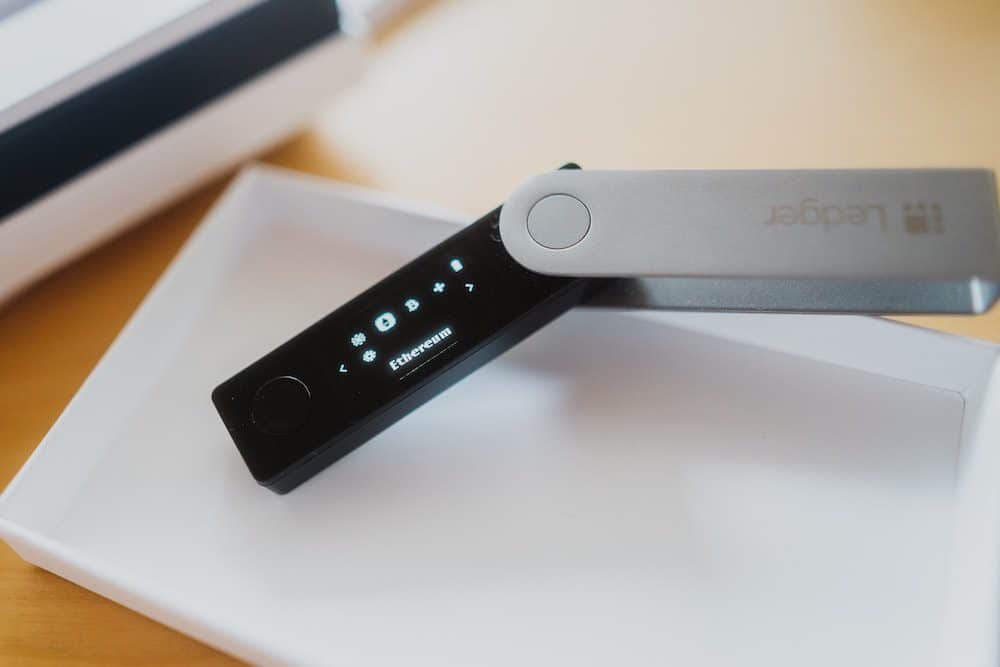When cryptocurrencies are purchased, they are typically held in what is known as a "wallet". Depending on the investor's background and experience, they will have a few options for what type of wallet they use. Many cryptocurrency investors choose to keep their coins on an exchange like Binance or Coinbase. If you buy crypto on an exchange and keep it there, your coins will be stored in the exchange's wallet, so you don't have to worry about technical details like network transaction fees or the software that is securing your coins.
However, this also comes with some tradeoffs. Because you don't have custody over your coins, you have to trust that the exchange won't be hacked or otherwise lose your funds. If they are, you may face the loss of part or all of your investment. You could also lose access to your cryptocurrencies temporarily if the exchange is down for maintenance or other reasons - which could be frustrating if you want to make a trade. For these reasons, many investors choose self-custody over their crypto assets, even though it requires more know-how.

What Is A Crypto Wallet?
Investors who hold coins use specialized software or hardware ‘wallet’. Crypto wallets don’t actually ‘store’ the funds – they’re stored on the blockchain. The wallet stores a unique password known as a ‘private key,’ which allows it to access the funds for an associated address. For example, a Bitcoin wallet manages access to the coins stored at a specific Bitcoin address. Some wallets support more than one type of cryptocurrency by storing multiple private keys under the hood.
Exchanges also use a wallet system, but the customers on the exchange don’t typically see it or have access to it. In a simple exchange setup, the exchange pools together all of its funds into one big wallet for each cryptocurrency. As customers make trades for different coins, the exchange keeps track of which customer owns what in the wallet system.
If you choose self-custody (managing your coins yourself), you are responsible for your wallet. Instead of leaving crypto you buy on an exchange, you withdraw it to your personal wallet. Unlike an exchange wallet, this personal wallet only manages your coins, rather than the coins of many different people.
What Are Hot Wallets & Cold Wallets?
One key concept to understand if you want to hold your crypto in self-custody is the idea of ‘hot’ and ‘cold’ wallets. At their core, hot and cold wallets are distinguished by their exposure to the internet.
Hot Wallets
Hot wallets are the most common kind of crypto wallet. They rely on a web connection to function. Almost all exchange wallets fall into the hot wallet category because they have to be constantly connected to the web to support timely transactions for users. Other examples of hot wallets include web wallets like MetaMask and phone apps like Exodus and Trust Wallet. These wallets are ‘hot’ because the devices they run on are exposed to the internet.
Hot wallets work using an internet connection, which makes them convenient for quickly sending and receiving funds, but also opens them up to security vulnerabilities. The same web connection that makes hot wallets quick and easy to use also allows hackers to steal funds over the web using bugs and exploits. Much like exchange wallets, users of hot wallets risk losing their funds to hackers or phishers. However, hot wallets are not pointless. They are a form of self-custody, meaning you don’t rely on a crypto exchange to access your funds.
Cold Wallets
Cold wallets are never connected to the internet, so they’re immune to attacks that take place over the internet. This might seem impossible at first because cryptocurrency transactions rely on the internet to work. But there are some hi-tech (and very primitive) ways to create a wallet that never connects to the internet.
In some cases, cold wallets rely on intermediary software that connects to the internet for them. This is the way that hardware wallets such as Ledger and Trezor work. These hardware wallets are small devices with no internet capability, and they communicate with the internet indirectly by connecting to a computer with a web connection. On a technical level, the password (the private key) in the hardware device manages the funds at the associated cryptocurrency address. The password never leaves the hardware wallet, so it is never vulnerable to hacking attempts.
Another similar cold wallet setup is a computer that is never connected to the internet. Wallet software is run on this web-isolated computer to create an address. Receiving crypto at an address doesn’t require an internet connection, so funds can be sent to the wallet without connecting it to the internet. This option can be very cheap if you have an old computer sitting around at home that you can keep unplugged from the internet.
However, moving funds out of a setup like this can present difficulties. Your options will be to make it a hot wallet by connecting the computer to the internet or to manually ‘sign’ transactions using the private key, which is very technical. In a nutshell, this is what hardware wallets do for you – they are small, web-isolated computers with software that makes transacting from the wallet much easier.
Is A Paper Crypto Wallet A Secure Choice?
Perhaps the most rudimentary example of a cold wallet is a ‘paper wallet.’ This is what it sounds like – a piece of paper with the information needed to access the wallet written on it. Because they’re so simple, paper wallets are tricky to use for anything other than receiving funds. However, they’re also very secure, provided they are generated in a safe environment – like on a computer with no internet connection. Paper wallets can be risky, though. If they’re damaged, lost, or stolen, there is no way to retrieve the funds they held. For this reason, they’re generally not recommended, although they used to be widespread. Some of the risks associated with ‘paper’ wallets made of actual paper can be avoided by using a more robust material like metal.
So Which Is Better? Hot Or Cold Wallets?
So what’s the final verdict on hot and cold wallets? Who’s the clear winner? The answer might not surprise you: there isn’t one. Both hot and cold wallets have their uses, which is why they are both still in common use today. Hot wallets offer easy management of funds and are generally more user-friendly. Cold wallets are harder to use but mitigate some of the security risks associated with hot wallets.
Some people choose to use both hot and cold wallets – the former for funds they need immediate access to and the latter for long-term storage over months or years. Others opt for leaving their coins on an exchange and let them deal with how the wallet works. The choice of which wallet to use – or whether to use one at all – is up to you.




